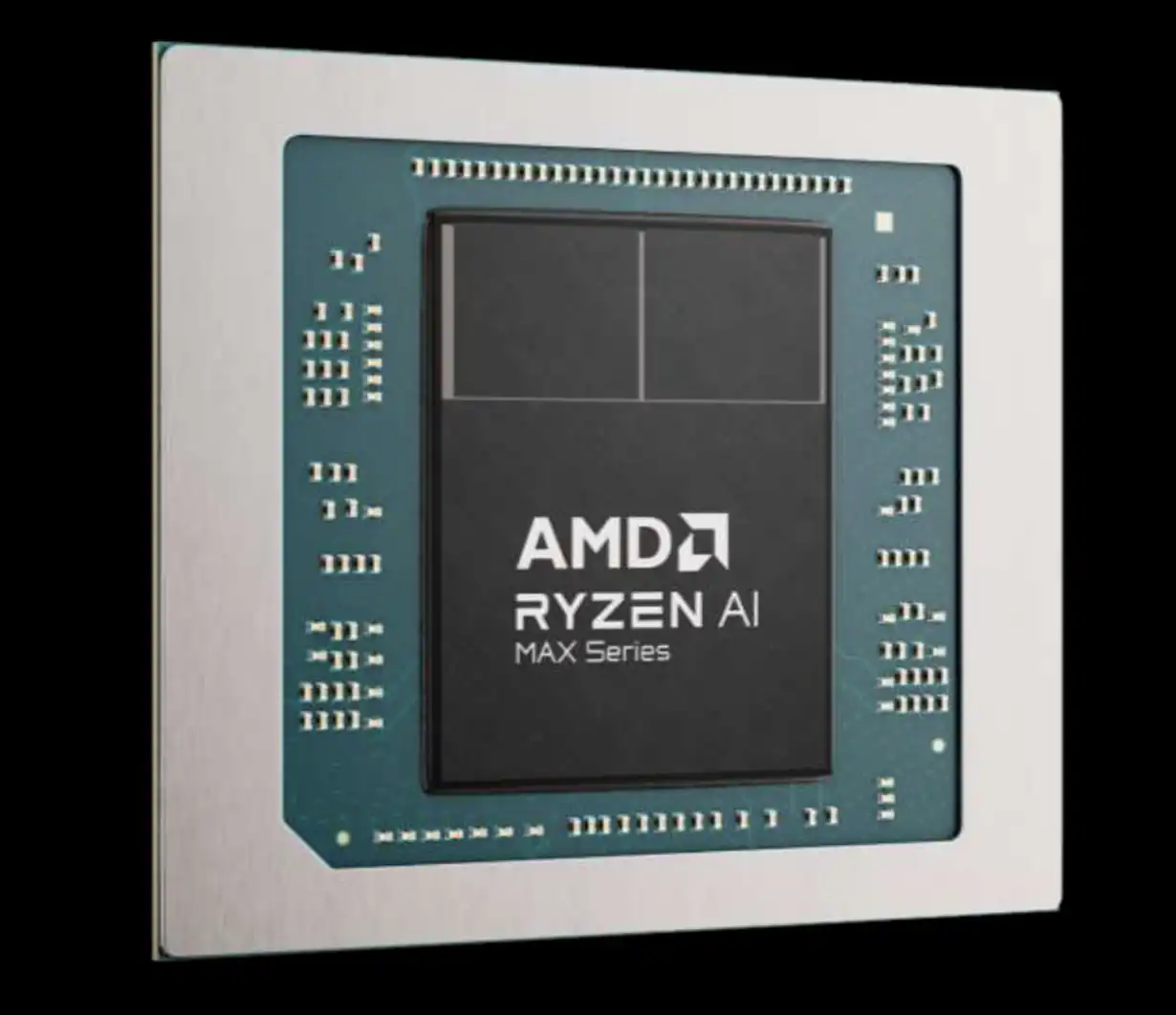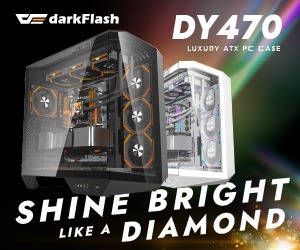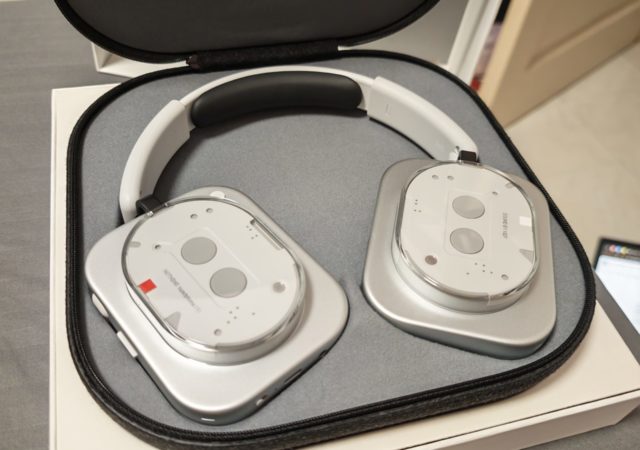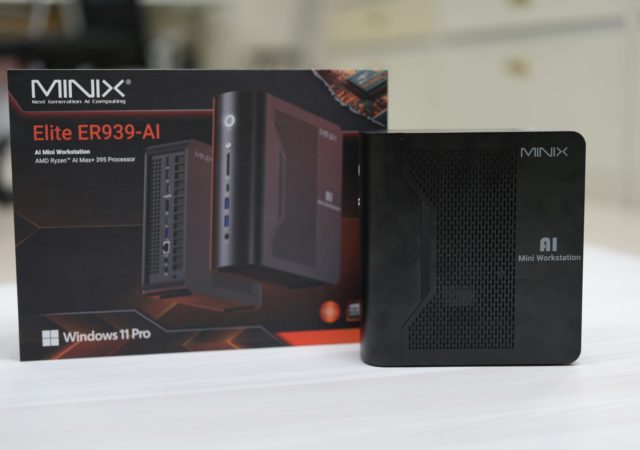At CES 2025, AMD officially unveiled the much-anticipated “Strix Halo” APUs, now named Ryzen AI Max. These chips represent the pinnacle of AMD’s engineering for gaming laptops, incorporating cutting-edge Zen 5 CPU cores, RDNA 3.5 integrated graphics, and a neural processing unit (NPU).
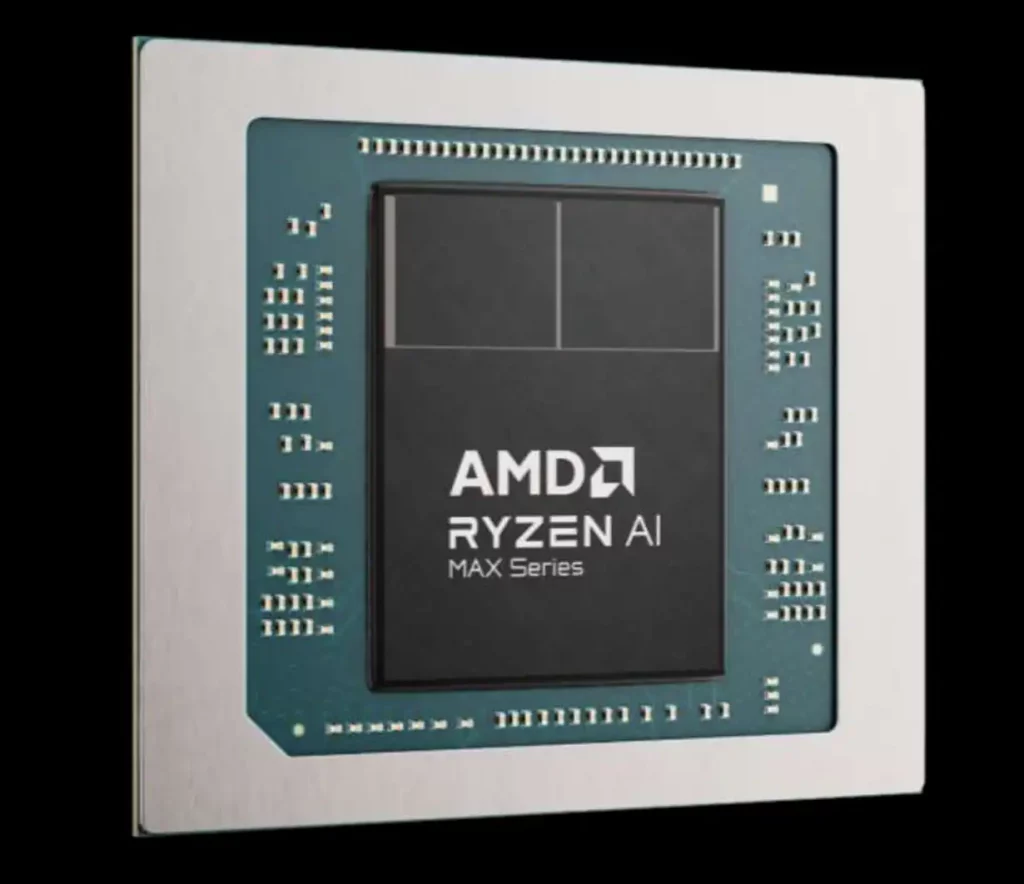 Their primary focus is on AI and creative workloads, with a unified memory architecture that supports up to 96GB of system RAM and a bandwidth of 256 GB/s, allowing these mobile processors to rival desktop machines in terms of mobile AI workstation performance.
Their primary focus is on AI and creative workloads, with a unified memory architecture that supports up to 96GB of system RAM and a bandwidth of 256 GB/s, allowing these mobile processors to rival desktop machines in terms of mobile AI workstation performance.
In terms of hardware, the GPUs in these chips boast a significant number of compute units, outperforming many handheld gaming PCs, though these are designed for thin and light laptops that can’t accommodate discrete GPUs. AMD’s NPU module stands out in terms of power efficiency, especially when handling AI tasks and models, making it a more practical choice for energy-efficient processing.
|
Model |
Cores/Threads | Compute Units (CU) | Boost Clock | Cache | TOPs | TDP |
|
Ryzen AI Max+ 395 |
16/32 |
40 |
5.1 GHz |
80MB |
50 |
45W-120W |
| Ryzen AI Max 390 |
12/24 |
32 |
5GHz |
76MB |
||
|
Ryzen AI Max 385 |
8/16 |
40MB | ||||
|
Ryzen AI Max 380 Pro |
6/12 |
16 |
4.9GHz |
22MB |
When it comes to performance, AMD claims that these chips provide 1.4x higher GPU performance and 2.6x faster rendering speeds compared to Intel’s Core Ultra 9 288V. However, these benchmarks are just the starting point; users will need to consider the laptop pricing, which AMD did not reveal at the event.
For business users, there will be PRO variants that align with the standard Ryzen AI Max series, but with added features designed for a more secure and business-friendly environment.
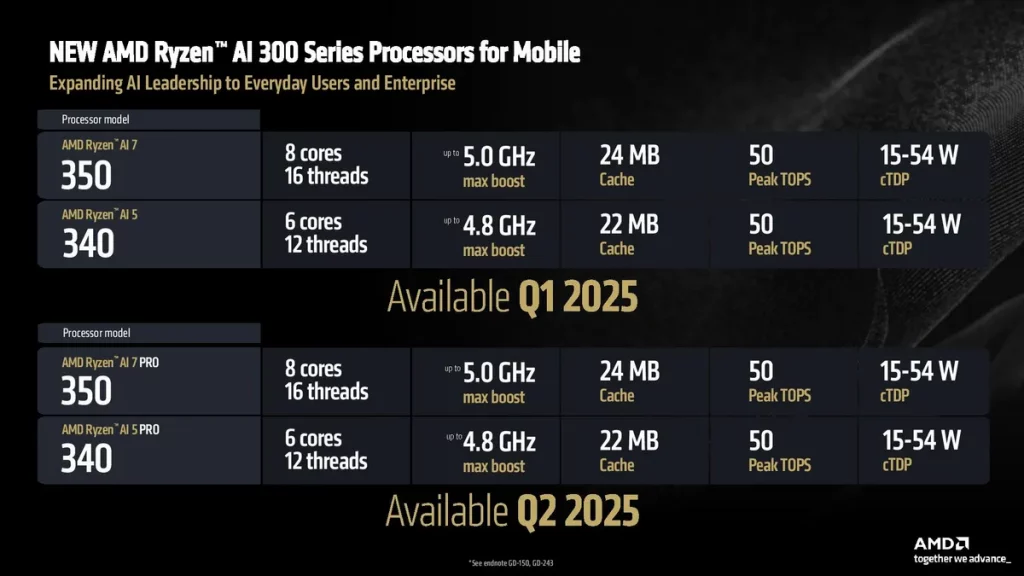 Meanwhile, Team Red is also expanding its portfolio with the Ryzen AI 7 350 and Ryzen AI 5 340, targeting mid-range laptops. These chips offer a slightly lower boost clock than their higher-end counterparts, but their overall specs remain largely unchanged. The PRO versions mirror the standard variants in architecture but come with business-oriented features for better security.
Meanwhile, Team Red is also expanding its portfolio with the Ryzen AI 7 350 and Ryzen AI 5 340, targeting mid-range laptops. These chips offer a slightly lower boost clock than their higher-end counterparts, but their overall specs remain largely unchanged. The PRO versions mirror the standard variants in architecture but come with business-oriented features for better security.
The Ryzen AI 7 350, in particular, is positioned as a strong competitor to Qualcomm and Intel, outperforming them by 30% and 54% in Cinebench R24 multicore tests, respectively. Other benchmarks also show strong results for AMD’s new chips.
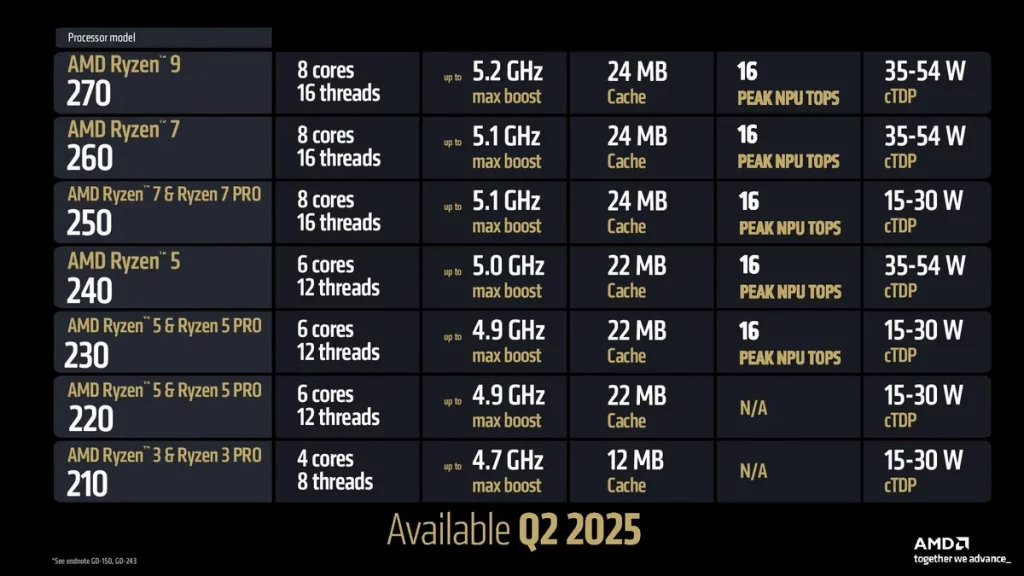 Lastly, AMD continues to support older platforms with 11 new SKUs, including four PRO variants, all of which offer higher clock speeds compared to the Ryzen 8040/45 models. While these may appear outdated to some, their performance and more affordable pricing make them an attractive option for budget-conscious consumers.
Lastly, AMD continues to support older platforms with 11 new SKUs, including four PRO variants, all of which offer higher clock speeds compared to the Ryzen 8040/45 models. While these may appear outdated to some, their performance and more affordable pricing make them an attractive option for budget-conscious consumers.


